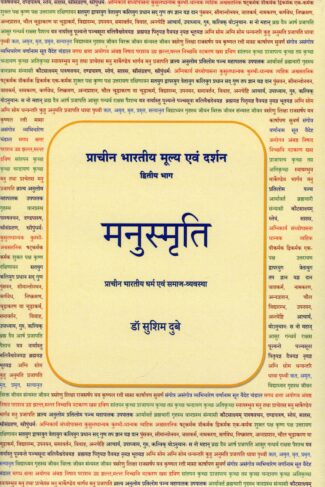

Kavyamimamsa of Raja...
Kavyamimamsa of Rajasekhara
Original Text in Sanskrit and Translation with Explanatory Notes by: Sadhana ParasharWritten sometime during 880-920 ad by Rajasekhara: an eminent poet, this first English translation of Kavyamimamsa is a kind of practical treatise for poets: kavisiksa manual highlighting, all possible attributes that go into the making of a good poet and a good poetic composition.
$32.00
ISBN: 9788124601402
Year Of Publication: 2013
Edition: 2nd
Pages : xv, 335
Bibliographic Details : 2 Maps; Appendices; Bibliography
Language : English
Binding : Hardcover
Publisher: D.K. Printworld Pvt. Ltd.
Size: 25 cm.
Weight: 800
As a body, Sanskrit writings unfold Indias millennia-long, almost unbroken intellectual tradition: not only of philosophy and grammar, but of literary theory as well. The concepts and critical theories, which the Sanskrit poeticians advanced or the issues they sought to address, inhere both universal appeal and validity. And, with certain modifications, these can well live up to the demands of modern literature. In this long and powerful tradition of Sanskrit literary theory that marked a definitive begining with Bharatas Natyashastra (first century ad), Kavyamimamsa is a monumental work. Written sometime during 880-920 ad by Rajashekhara: an eminent poet, dramatist and critic, it is a kind of practical treatise for poets: kavishiksha manual highlighting, as it does, all possible attributes that go into the making of a good poet and a good poetic composition. Among other relevant aspects, Rajashekhara also includes here a systematic exposition of the views/opinions of his predecessors, with illustrations of the literary practices of various times and climes put down after careful empirical observation. Now, when there is a growing scholarly interest in the study of Sanskrit literary theory and how it is positioned vis-a-vis the Western critical tenets, Dr. Sadhana Parashar brings Rajashekharas classic within everyones reach offering the first-ever, complete English translation of Kavyamimamsa, with its original Sanskrit text and comprehensive explanatory notes. For sure, it is invaluable to the scholars of linguistics and literary criticism.
Preface
The Shastra Group at Jawaharlal Nehru University — An Introduction
Transliteration Chart
Introduction
Maps
1. Shastrasamgrahah (The Discipline of Poetics)
2. Shastra-Nirdeshah (Nature and Division of Poetics)
3. Kavyapurushotpattih (Origin of Kavya)
4. Pada-Vakya-Vivekah (Language, Word and Sentence)
5. Vyutpatti and Kavya-Paka (Vyutpatti and Maturity in Poetic Expression)
6. Pada-Vakya Vivekah (Definition and Kinds of Sentences)
7. Vakya-Bhedah (Modes of Sentences and Intonation)
8. Kavyarthyonyah (Sources of Meaning in Poetry)
9. Arthavyaptih (Description of Sources of Meaning)
10. Kavicarya and Rajacarya (Daily Routine and Duties of a Poet and a King)
11. Shabdaharanam (Appropriation of Words)
12. Arthaharanam (Appropriation of Meanings)
13. Arthaharaneshvalekhyaprakhyadibhedah (Different kinds of Appropriation)
14. Kavi-Samaya (Conventions of a Poet)
15. Guna-Samaya-Sthapana (Poetic Conventions)
16. Svargya-Pataliya-Kavi-Rahasya-Sthapana (Poetic Conventions Relating to Celestial and Nether Worlds)
17. Desha-Vibhagah (Geographical Regions and its Divisions)
18. Kala-Vibhagah (Divisions based on Time)
Appendix I
Appendix II
Bibliography







